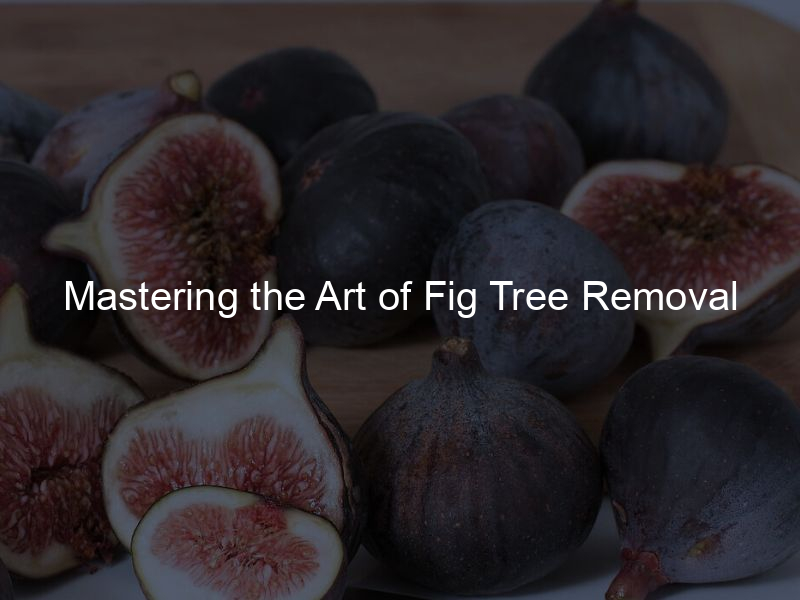Understanding Fig Tree Dormancy
Fig trees, like many other plants, undergo a period of dormancy. This is a natural part of their life cycle, but it can often be confusing for new garden owners. Let’s delve into the details of fig tree dormancy.
-
- What is fig tree dormancy?
Fig tree dormancy is a period during which the tree’s growth and metabolic activities slow down significantly. This is a survival strategy that allows the tree to conserve energy during unfavorable conditions, such as winter. During this period, the tree may appear lifeless, but it’s merely resting and conserving energy for the next growing season. Dormancy is a common phenomenon in many plant species, not just fig trees.
-
- Why does a fig tree go dormant?
A fig tree goes dormant primarily in response to changes in the environment. As the days get shorter and temperatures drop, the tree prepares itself for the harsh winter ahead. By going dormant, the tree is able to survive the cold months when the conditions are not conducive for growth. This is a natural survival mechanism that has evolved over millions of years.
-
- Signs of a dormant fig tree
Recognizing a dormant fig tree is crucial for its proper care. Some signs of dormancy include loss of leaves, no new growth, and a general appearance of being lifeless. However, this doesn’t mean that the tree is dead. If you scratch the bark slightly, you’ll see a green layer underneath, indicating that the tree is alive but in a state of rest. It’s important not to confuse dormancy with disease or damage, as the care for each condition is different.
Understanding fig tree dormancy is essential for any garden owner. It helps you provide the right care at the right time, ensuring that your tree remains healthy and productive year-round. In the following sections, we’ll discuss how to care for a dormant fig tree and how to wake it up when the time is right.

Fig Tree Care During Dormancy
When your fig tree enters its dormant phase, it’s not sleeping on the job. It’s simply taking a break to prepare for the next growing season. Proper care during this period is crucial to ensure a healthy and productive tree. Let’s delve into how to care for your indoor fig trees during dormancy.
Caring for Dormant Fig Trees Indoors
Indoor fig trees need a different type of care compared to their outdoor counterparts. Here are some key steps to follow:
1. Proper location and temperature
Fig trees prefer a cool, dry environment during dormancy. Find a location in your home that stays consistently between 50-55°F (10-13°C). Avoid placing your tree near heat vents or drafty windows. A basement or garage can often provide the ideal conditions.
2. Watering and feeding
During dormancy, your fig tree’s water and nutrient needs decrease. Water the tree sparingly, only when the soil feels dry to the touch. Refrain from fertilizing until the tree shows signs of new growth in the spring.
3. Monitoring for pests and diseases
Even in dormancy, fig trees can be susceptible to pests and diseases. Regularly inspect your tree for signs of trouble, such as discolored leaves or unusual growths. If you spot any issues, treat them promptly to prevent further damage.
Remember, your fig tree’s dormancy is a natural and necessary phase of its life cycle. With the right care, your tree will emerge from this rest period ready to produce a bountiful crop of delicious figs.
Stay tuned for our next section where we will discuss how to care for your fig trees outdoors during dormancy. Happy gardening!
Fig Tree Maintenance Outdoors During Dormancy
Fig trees, like many other fruit trees, enter a period of dormancy during the colder months. This is a natural process that allows the tree to conserve energy and prepare for the next growing season. However, even during this dormant period, your fig tree requires some care and attention to ensure it remains healthy and ready for spring. Here are some key steps for maintaining your fig tree outdoors during dormancy:
1. Protecting the Tree from Harsh Weather Conditions
Fig trees are native to the Mediterranean and prefer warm, dry climates. If you live in an area with harsh winters, it’s crucial to protect your fig tree from the cold. One way to do this is by wrapping the tree in burlap or a specialized tree blanket. This helps to insulate the tree and protect it from frost damage. You can also add a layer of mulch around the base of the tree to help keep the roots warm. Learn more about fig trees and their preferred climates here.
2. Pruning and Fertilizing
During dormancy, it’s a good time to prune your fig tree. This helps to promote healthy growth in the spring. Remove any dead or diseased branches, and trim back any branches that are growing too close to the center of the tree. This helps to improve air circulation and sunlight penetration. In terms of fertilizing, a slow-release, balanced fertilizer can be applied in late winter to prepare the tree for spring growth.
3. Preparing the Tree for Spring
As the weather begins to warm up, it’s time to start preparing your fig tree for spring. Remove any protective coverings and check the tree for signs of pests or disease. You can also start to gradually increase watering, as the tree will need more water as it comes out of dormancy. Remember, a healthy fig tree in spring starts with proper care during dormancy.
In conclusion, even though your fig tree may appear inactive during the winter months, it’s still important to provide it with the care it needs. By protecting it from harsh weather, pruning and fertilizing appropriately, and preparing it for spring, you can ensure your fig tree remains healthy and productive year after year.
Waking Up Your Dormant Fig Tree
As the winter season recedes, it’s time to wake up your dormant fig tree and prepare it for the warmer months. This process involves understanding when to move your fig tree outdoors and how to do it safely.
When to Move Fig Tree Outdoors
Knowing when to move your fig tree outdoors is crucial for its health and productivity. Here are some signs that your fig tree is ready to move outdoors and steps to safely transition your fig tree outdoors.
-
- Signs that your fig tree is ready to move outdoors:
When the temperatures consistently stay above 50 degrees Fahrenheit, it’s a clear sign that your fig tree is ready to move outdoors. Another sign is the appearance of new growth on the tree. This indicates that the tree has come out of its dormancy and is ready for the growing season.
-
- Steps to safely transition your fig tree outdoors:
Start by gradually exposing your fig tree to the outdoor environment. Begin with a couple of hours per day and gradually increase the time. This process, known as hardening off, helps the tree to acclimate to the outdoor conditions. After a week or two, your fig tree should be ready to stay outdoors permanently. Remember to choose a location that receives plenty of sunlight and has well-draining soil.
Waking up your dormant fig tree and moving it outdoors is an important step in ensuring its health and productivity. By following these steps, you can ensure that your fig tree thrives in the outdoor environment.

Fig Tree Care After Dormancy
Once your fig tree awakens from its dormant state, it requires specific care to ensure healthy growth and a bountiful harvest. Here are some key steps to follow:
1. Proper watering and feeding
Fig trees need consistent watering, especially during the growing season. However, avoid overwatering as it can lead to root rot. A good rule of thumb is to water when the top inch of soil is dry. As for feeding, a balanced fertilizer applied in early spring can provide the necessary nutrients for the tree’s growth. Remember, a healthy fig tree is a productive one.
2. Pruning and maintenance
Pruning is essential for maintaining the shape of your fig tree and promoting better fruit production. The best time to prune is in late winter when the tree is still dormant. Remove dead or diseased branches, and thin out the canopy to allow sunlight to reach all parts of the tree. Regular maintenance also includes removing fallen leaves and debris around the tree to prevent the spread of diseases.
3. Monitoring for pests and diseases
Keep an eye out for common fig tree pests like aphids, mealybugs, and fig beetles. If you notice any signs of infestation, such as discolored leaves or a sticky substance on the tree, take action immediately. Similarly, watch for diseases like rust and blight. Early detection and treatment can save your tree from severe damage.
In conclusion, proper care after dormancy is crucial for the health and productivity of your fig tree. With consistent watering, feeding, pruning, and monitoring, you can enjoy a thriving fig tree and a plentiful harvest.
Fig Tree Gardening Advice
Fig trees are a wonderful addition to any garden. They provide delicious fruit and add a touch of Mediterranean charm. However, they require specific care to thrive. Here, we’ll share some best practices for fig tree care, common mistakes to avoid, and resources for further advice.
-
- Best Practices for Fig Tree Care
Fig trees are relatively easy to grow, but they do require some specific care. Here are some tips to help you get the best from your tree:
-
-
- Watering: Fig trees need a lot of water, especially during the growing season. However, they don’t like waterlogged soil, so make sure your tree is in well-drained soil.
- Pruning: Pruning helps to maintain the tree’s shape and promote fruit production. The best time to prune is in the late winter when the tree is dormant.
- Fertilizing: Fig trees don’t require a lot of fertilizers. However, a slow-release granular fertilizer can be beneficial in the early spring.
- Common Mistakes to Avoid
-
While fig trees are relatively forgiving, there are some common mistakes that gardeners make. Here are a few to avoid:
-
-
- Overwatering: While fig trees need a lot of water, overwatering can lead to root rot. Make sure the soil is well-drained.
- Under-pruning: Fig trees need to be pruned to maintain their shape and promote fruit production. Neglecting this can lead to a lack of fruit and a misshapen tree.
- Planting in the wrong location: Fig trees need a lot of sunlight and space. Planting them in a shady or cramped location can hinder their growth.
- Resources for Fig Tree Gardening Advice
-
There are many resources available for those interested in growing fig trees. Here are a few:
-
- Wikipedia: Wikipedia’s page on the common fig provides a wealth of information on the tree’s biology and care.
- Local Extension Services: Your local extension service can provide personalized advice based on your specific location and conditions.
- Gardening Books and Magazines: There are many books and magazines available that provide detailed information on fig tree care.
Case Study: Successful Fig Tree Care
Let’s delve into a real-life example of a gardener who successfully navigated the challenges of caring for a fig tree during its dormancy period. This case study will provide practical insights and strategies that you can apply in your own garden.
Understanding Fig Tree Dormancy: A Gardener’s Experience
Our gardener, John, has been growing fig trees for over a decade. His experience provides valuable insights into the challenges and strategies involved in fig tree care during dormancy.
- Challenges faced during the dormancy period: John found that the biggest challenge was maintaining the right balance of moisture and temperature. Fig trees need a cool, dry period to go dormant, but too much cold can damage the tree. He also struggled with pests that were attracted to the fig tree during this period. Learn more about fig tree dormancy on Wikipedia.
- Strategies used to care for the fig tree: To combat these challenges, John used a combination of strategies. He monitored the weather closely and used a protective cover to shield the tree from extreme cold. He also used organic pest control methods to keep pests at bay. Regular pruning helped the tree maintain its shape and health during dormancy.
- Results and key takeaways: John’s fig tree thrived, producing a bountiful harvest the following season. His key takeaways were the importance of regular monitoring, proactive pest control, and the benefits of organic gardening methods. He also learned that patience and persistence are key in fig tree care.
In conclusion, understanding and managing fig tree dormancy is a challenging but rewarding part of gardening. With the right strategies, you too can enjoy the fruits of your labor.








